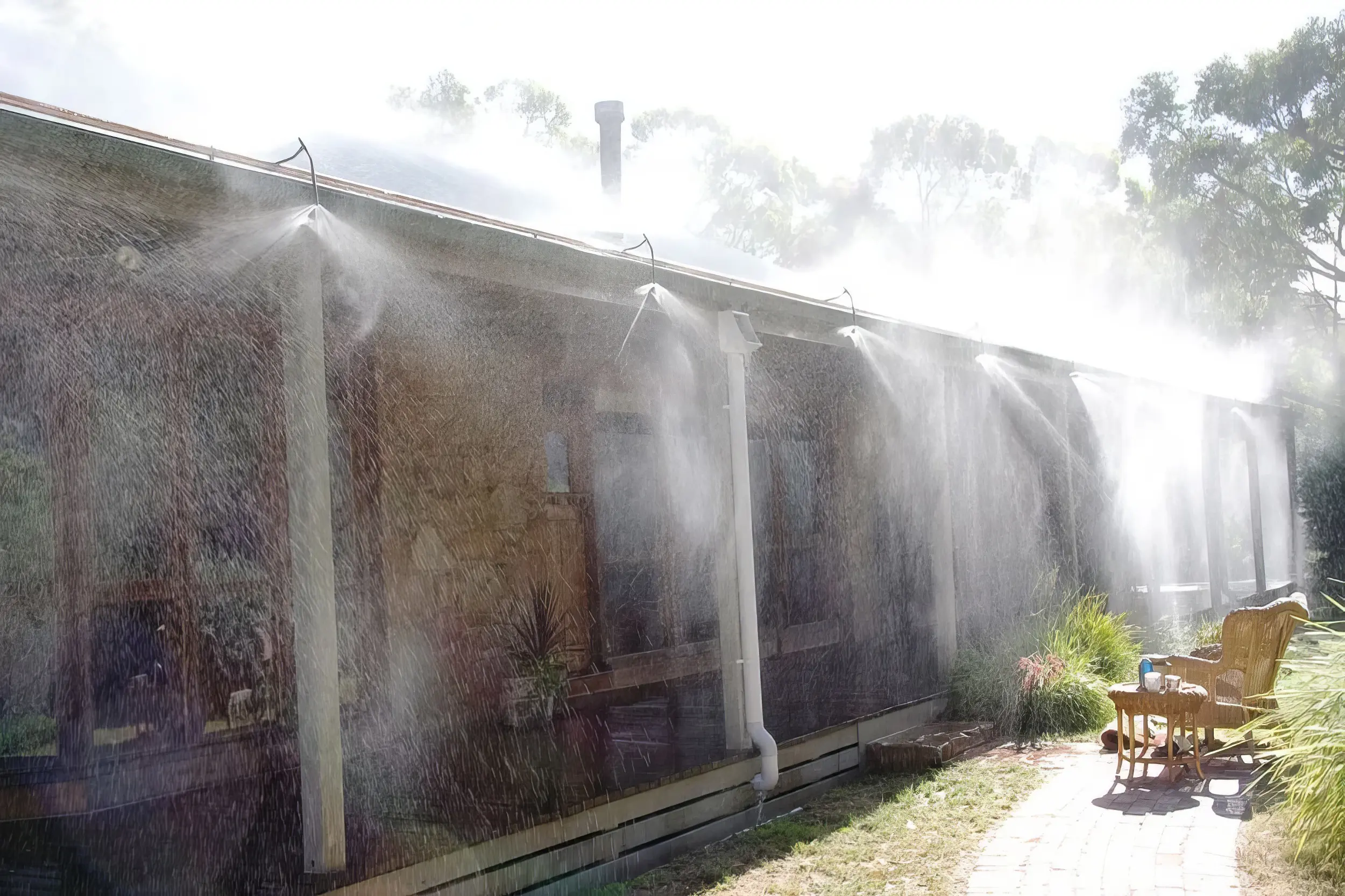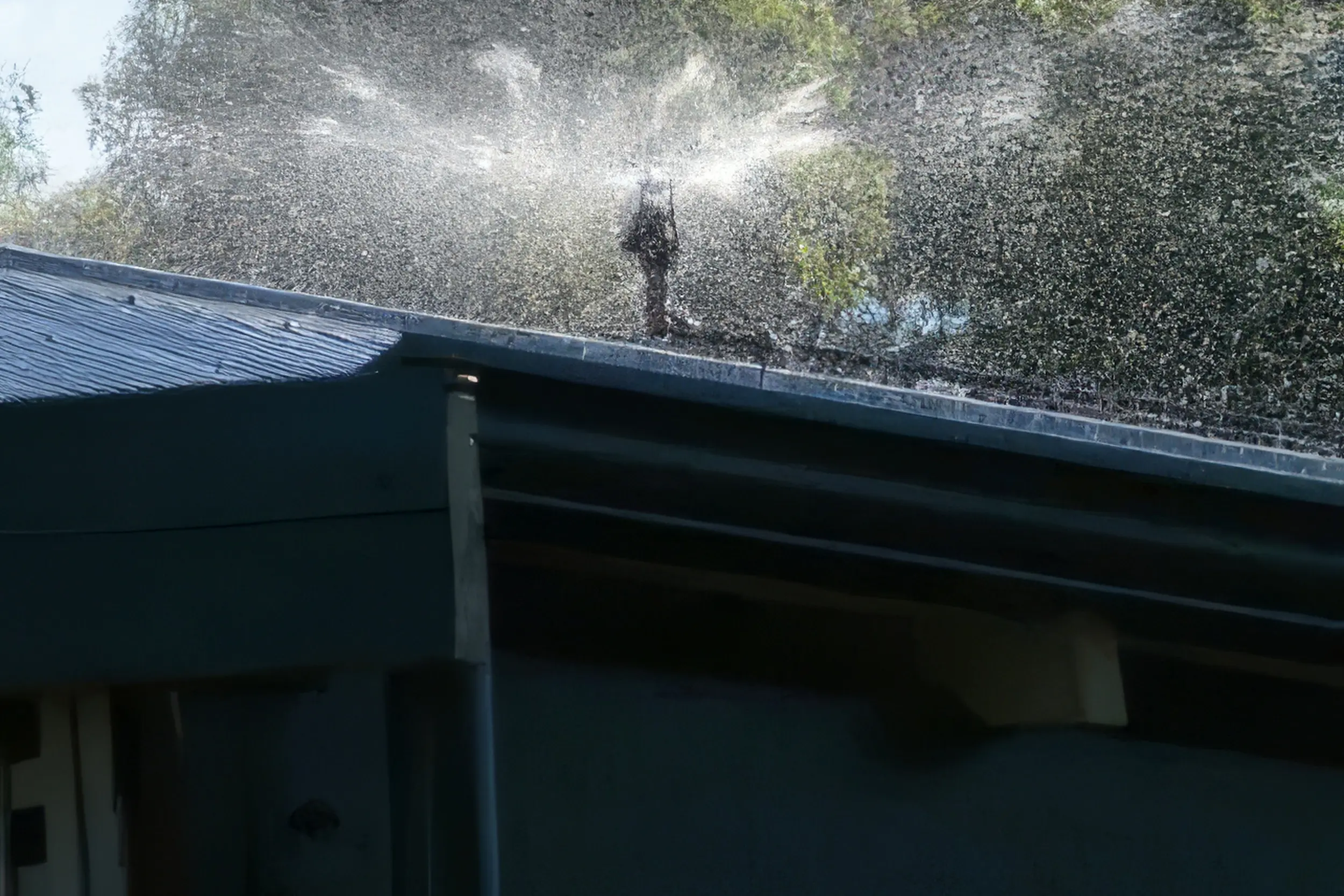IN THE EVENT OF AN EMERGENCY THIS SITE IS NOT MONITORED. FOR CURRENT INFORMATION GO TO HTTPS://EMERGENCY.MARINCOUNTY.GOV.
Exterior Sprinkler Systems
- Fire Safe Marin does not recommend any exterior sprinkler system which must be manually triggered on-site. You must evacuate early, and it is impossible to predict exactly when a home will be impacted by a wildfire.
- Exterior garden sprinklers are ineffective and can reduce critical water pressure for entire neighborhoods when many are turned on.
- Before installing any exterior protection system, consult with your local fire and building officials, and ensure that you have created defensible space, and retrofitted all aspects of your building with the wildfire home hardening techniques outlined on this website.
- Beware of snake oil! Be alert for manufacturers overselling their product’s capabilities, and know that there are no magic solutions to protect an otherwise vulnerable home from wildfires.
- Retrofitting exterior materials and designs with home hardening techniques is likely to be more effective than any exterior sprinkler, foam, or gel system.
- Fire Safe Marin does not recommend any particular product(s).
Functionality & Installation
The function of an exterior sprinkler system is to minimize the opportunity for ignition by wetting the home and surrounding property. Sprinkler systems should be able to protect a home against the three basic wildfire exposures: wind-blown embers, radiant heat, and direct flame contact.
Sprinklers systems can be mounted in one or more locations, including:
- The roof.
- Under the eave at the edge of the roof.
- On the property, in which case the sprinklers are directed at the home from multiple locations surrounding it. Ember ignition of combustibles located on or near the home can result in a radiant and/or flame contact exposure (Photo 2). Water should reach all vulnerable areas for the system to have maximum effect both on and near the home.
Potential Issues
Post-fire assessments have shown exterior sprinkler systems can be effective in helping a home survive a wildfire, but potential issues exist with their use. These issues include:
- The water supply should be adequate to deliver water when needed, for the time embers could threaten a home. This period could be up to 8 hours.
- Check with your local fire department if your sprinkler system uses water from a municipal supply; they may have suggestions to help minimize water consumption.
- The effectiveness of a sprinkler system is questionable when a neighboring home is burning since this would result in extended radiant heat and/or contact exposure to the home.
- These systems can be activated manually or by an automated device, such as a sensor that detects heat or flame, or by an SMS-enabled cell phone. The ability of these systems to activate based strictly on an ember exposure has not been determined. Since wind-blown embers can be transported for up to a mile from the flame front of a wildfire, this may be a limitation.
- The most threatening wildfires occur during high-wind events and the homeowner should consider how the distribution/transport of water droplets may be influenced by elevated wind speeds.










